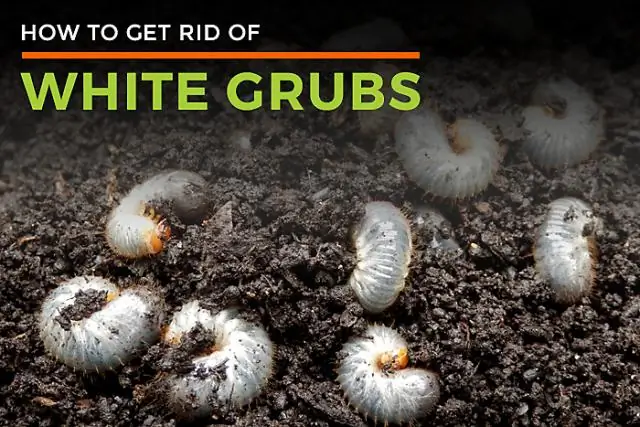
Table of contents:
- Author Bailey Albertson [email protected].
- Public 2024-01-17 22:26.
- Last modified 2025-06-01 07:32.
Kozheedy in the house: what you need to know about beetles
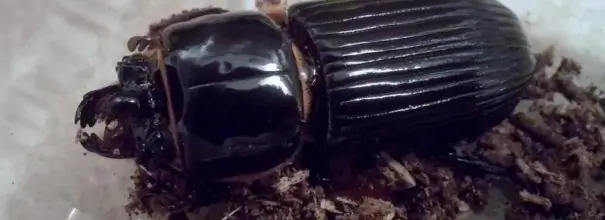
Despite the fact that bugs-kozheedy are quite frequent guests in our homes, many have heard practically nothing about them. And they are puzzled by this question only when small pests have already settled in our apartments and caused damage. To protect housing from the appearance of a pest, you need, as they say, to know the enemy by sight. And control measures are also chosen much easier when we know what we are dealing with.
Content
-
1 Kozheedy: we recognize the pest
-
1.1 What beetles-kozheedy can enter the apartment
1.1.1 What the five most common types of skin beetles look like - photo gallery
- 1.2 How do kozheedy appear in homes and where to find them
-
1.3 What harm is done by skin beetles and their larvae
1.3.1 Can beetles bite humans
-
-
2 How to deal with kozheedy in the apartment
-
2.1 Methods for the prevention of skin infections
2.1.1 Repellents in the fight against skin beetles
- 2.2 Chemicals for the fight against skin
-
2.3 Temperature regime in the fight against beetles
2.3.1 How to get rid of the skin beetle (video)
-
Kozheedy: we recognize the pest
Kozheedy are coleopteran insects. There are more than 600 species in the family. And only 16 of them are considered pests capable of causing "primary" damage by damaging materials.
What skin beetles can enter the apartment
In Russia, representatives of two genera of insects can most often be found: Anthrenus and Attagenus
Anthrenus kozheedy are very small - barely reaching 4 mm. The shape is usually oval. The body is scaly. The shape of the scales differs depending on the type of beetle, and can be: oval, triangular or lanceolate.
The larvae are oval, with a slightly elongated and tapering body. The size is about 5-7 mm. Tufts of bristles are located on the sides. They fan them out for protection. The rest of the body is covered with brown, black, sticky hair.
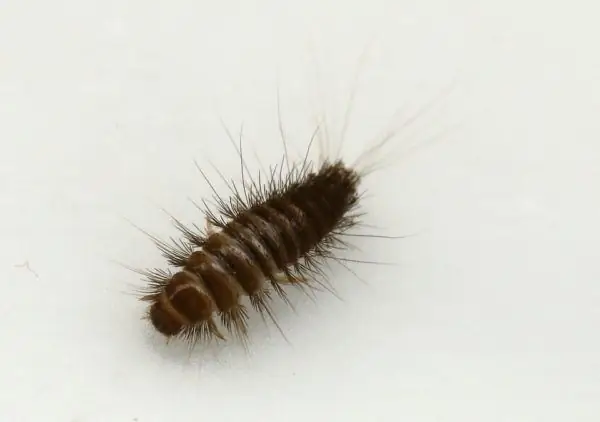
Larva of the Anthrenus genus beetle
Representatives of the genus who can meet in the apartment:
- Variegated skinhead.
- Mink skinhead.
- Museum kozheed.
Beetles of the genus Attagenus are also small in size - from 2 to 6 mm. They have an oval, slightly elongated body, covered with hairs.
The larva reaches a length of 10 mm. The shape is oval, oblong, gradually tapering towards the end. The larva has a cover of sparse erect golden hairs. And at the end of the body there is a "tassel" of long hair.
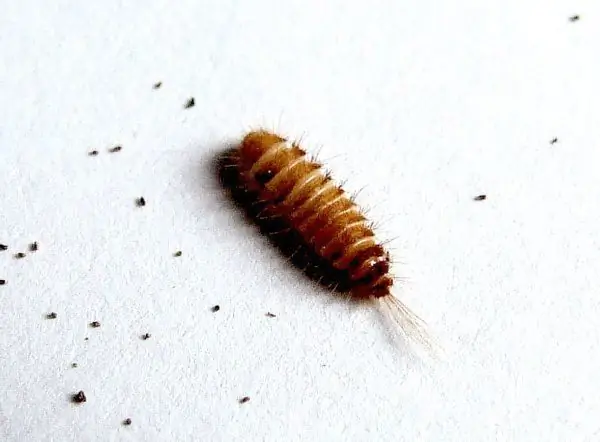
Larva of the genus Attagenus beetle (Attagenus)
Attagenus beetles (Attagenus), which often infiltrate living quarters:
- Kozheed Smirnova
- Carpet leather
What does the five most common types of skin beetles look like - photo gallery
-

Mink skinhead - Mink skinhead
-

Museum kozheed - Museum kozheed
-

Kozheed Smirnova -
Kozheed Smirnova
-

Motley kozheed - Motley kozheed
-

Carpet leather - Carpet leather
If you have not identified your “guest” from the images presented and think that a rarer specimen has looked at you, you can turn to an authoritative source - study the Atlas of Dermestidae of Russia and neighboring countries (website of the Zoological Institute of the Russian Academy of Sciences).
How do kozheedy appear in homes and where to find them
Adult insects prefer to feed on plants during the flowering period. Variegated, norichnikov, and museum and carpet kozheedov can be observed in the company of other insects on the flowers of wild rose, mountain ash, hawthorn and other rosaceae. If these forage plants are in abundance, the bugs will not scatter more than ten meters from their usual habitat. Insects can enter the apartment in the spring-summer period (April - June). The fact is that this time is the period of reproduction of kozheedov. They scatter and can fly into the apartment on the "light" (they are attracted by the light). Beetles during this period can also be found on window sills, on chandeliers, in shades.
Once in the apartment, females tend to lay eggs. They choose a place in fabric folds, on rough materials. The eggs hatch into larvae. They, feeding, damage property. The placement of beetle larvae in an apartment largely depends on the species.
| View | Where is found |
| Anthrenus larvae | surface materials and folds |
| Larvae of the genus Attagenus | bulk materials, dust-like residues and material debris on the bottom of cabinets, drawers, carpet pile, parquet cracks, space behind skirting boards |
Beetle larvae of both species settle in dark, warm and dry places. Therefore, the microclimate of the room plays an important role in the prevention of skin infections. Beetles can enter living quarters from basements and attics that contain pigeons or rodents.
The degree of harmfulness of insects is not yet fully known. The reason for this is the type of damage.
Much visible damage is often attributed to moths. Indeed, there are many similarities. However, the moth leaves cobweb passages, excrement in the form of balls. And a distinctive feature of the lesion by the skinhead is the larval skins, which are easily destroyed by the slightest impact, even by air movement.
What harm is done by skin beetles and their larvae
It would seem that by the name everything should be clear what the SKIN-eaters eat. However, things are not so simple with these bugs. In food, they are not whimsical, so the variety of materials on which they parasitize is very great. Insects are characterized by a high level of adaptation in a "non-natural" environment. There are practically no inedible things for bugs.
The most beloved "delicacies" of kozheedov are products made from materials such as:
- wool;
- fur;
- fluff;
- silk;
- leather.
In a forced situation in the process of searching for food, the larvae "incidentally" spoil:
- linen, cotton and fabrics;
- newsprint;
- nylon;
- nylon;
- letherin;
- polypropylene;
- polyethylene.
Beetle damage to materials largely depends on their type and structure.
- Felt products are eaten up by larvae starting from the surface fibrous layer. The base is damaged later.
- Damage to woolen fabrics is chaotic: the larvae seem to pull the fabric apart into individual fibers.
- On fur and velvet fabrics, the larvae “cut off” entire areas.
- Having reached thick smooth fabrics, skin beetles, as a rule, begin with damage to the fringed edge.
The larvae of Attagenus beetles prefer fuzzy, fibrous materials to smooth tissues - in general, those with a relief surface. This, of course, if there is a choice. If there is no such choice, there is a switch to unusual materials. And the larvae can do without food for a long time - from the genus Anthrenus - a whole month, and the larva of Smirnov's skinhead - even several months.
Can beetles bite a person
Kozheedy are not blood-sucking parasites. But, like any other insect, they, of course, can bite.
Whether kozheedy actually bite is a difficult question. Different sources give different information on this issue. Encyclopedia data claim that the bite of this beetle is just a myth. An insect can threaten only from an economic point of view - by causing damage to valuable products made of fur, wool and silk.
However, on the Internet every now and then there are photographs, supposedly illustrating a skin bite.
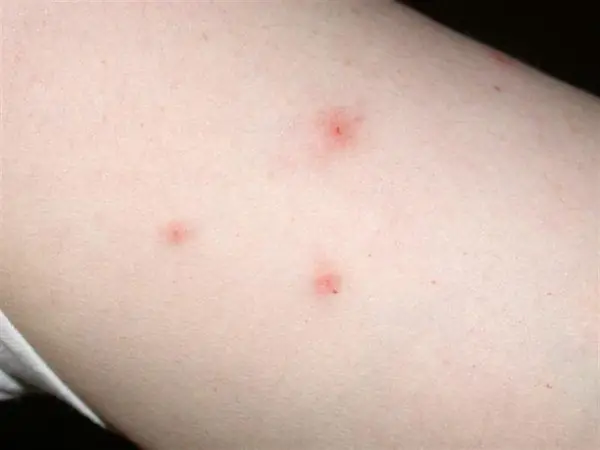
In the photo, the bite of a kozhaede looks like a bite of any other insect.
It seems that if skin-eating beetles bite people, then, most likely, in rare cases. Perhaps a simple coincidence is to blame. People, having found beetles and marks on the body, similar to a bite, immediately ascribe "guilt" to the kozheed. But in fact, another insect could bite. Another explanation is that redness and spots are associated with an allergic reaction to beetles.
How to deal with kozheedy in an apartment
To protect the apartment from skin infection, it is necessary to carry out:
- preventive actions;
- extermination activities.
In the case of destructive measures, especially with the use of chemicals, you should carefully read the instructions, contraindications to the use of toxic substances.
Methods for the prevention of skin infections
First of all, it is important to take into account two possible ways for the appearance of kozheedov in an apartment and a private house. This is a flight from the street and a transfer with contaminated objects and materials. It is necessary to exclude the possibility of beetles entering the dwelling. Here are some simple tips:
- With the onset of the warm season, do not forget to install screens on windows (preferably with small cells).
- Clean regularly with a vacuum cleaner. When traces of a beetle appear - at least once a week.
- Have your rugs dry cleaned every season.
- In a private house, basements and attics should not be littered.
- If you suspect the appearance of bugs, inspect window sills, lamps.
- Store items made of fur, wool, silk hanging.
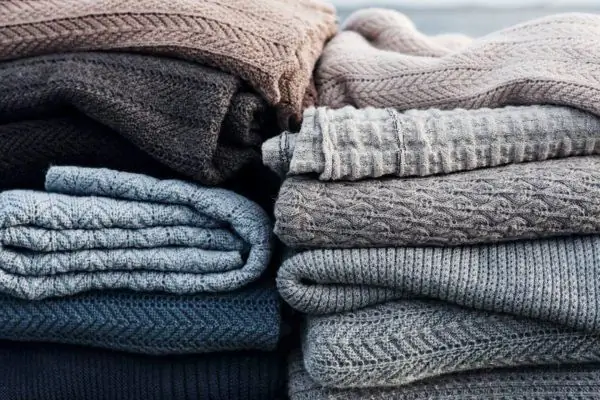
It is not recommended to store things made of "favorite materials" of the leather-eater in piles. This creates more favorable conditions for the crawling of larvae.
Repellents in the fight against skin beetles
Repellents are products that use scent to repel pests. Their use is a necessary action to protect the apartment from insect pests. In practice, the use of odorous products is often dictated by "folk traditions" and the advice of "experienced", so the effectiveness is not only not proven, but also unsupported. There are practically no drugs that would have a pronounced repelling effect on kozheedov. Naphthalene, for example, perfectly repels moths, but does not work on skin beetles. In general, kozheedy react to odorous substances in different ways, depending on the species. Therefore, it is impossible to find a universal remedy.
Chemicals to combat skin debris
The most effective and common way to control pest beetles is chemical preparations - insecticides. They are used in different forms: aerosols (Aerosol, Foxid, Mitox), Riapan, Neopin dusts, chlorophos aqueous solutions, and boric acid ground into powder. The drugs are used to treat window sills, floors (and walls 20 cm from the floor), cabinets and racks. Particular attention should be paid to the "favorite" habitats of the larvae - crevices (dusts can be rubbed directly into them). Dichlorvos-based preparations are widely used. For example, "Molemor" and "Desmol" (plates and tablets).
The effect of drugs often depends on the surface to be treated. Aeroantimol and Foxide are best suited for use on the following materials:
- glass (window treatment in summer);
- wood;
- metal;
- linen and cotton fabric.
The effect will be much lower if the product is applied to cardboard or varnished wood.
Temperature regime in the fight against beetles
In the fight against dermatitis, you can successfully use low temperatures - freeze bugs. However, to achieve the goal, it is necessary to keep the contaminated object in a frost of -15-20 C for five hours. And this will have to be done not once, but two or three times with the obligatory alternation of positive temperatures. This mode is suitable for the destruction of all types of beetles.
The microclimate with a temperature of +5 C will also be fatal for kozheedov at all stages of development. Falling into a torpor, they stop feeding and soon die.
Beetles do not like and the temperature is "hot". At + 60 ° C and above, insects will die. If the infected material allows it to be exposed to high temperatures, then you can safely disinfest with heated air. The processing time depends on the properties of the material. For example, it will take about three hours to process felt items.
How to get rid of the skin beetle (video)
Kozheedy are specific pests. Methods for controlling these insects are not fully understood. It is best to adhere to preventive measures and try to prevent the appearance of larvae in the apartment. If this happens, treatment with special chemicals is the most effective option for controlling insects.
Recommended:
Icons On Clothes For Washing: Decoding Of Labels, A Detailed Table Of Symbols And Their Designations + Photo
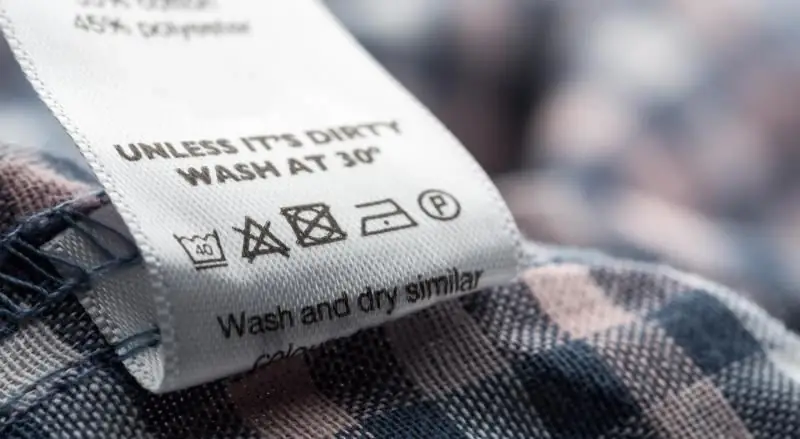
What are labels on clothes for? Explanation of the main icons and designations. Rules for washing products made of special materials
White Interior Doors In The Interior Of The Apartment: Varieties And Compatibility, Photo
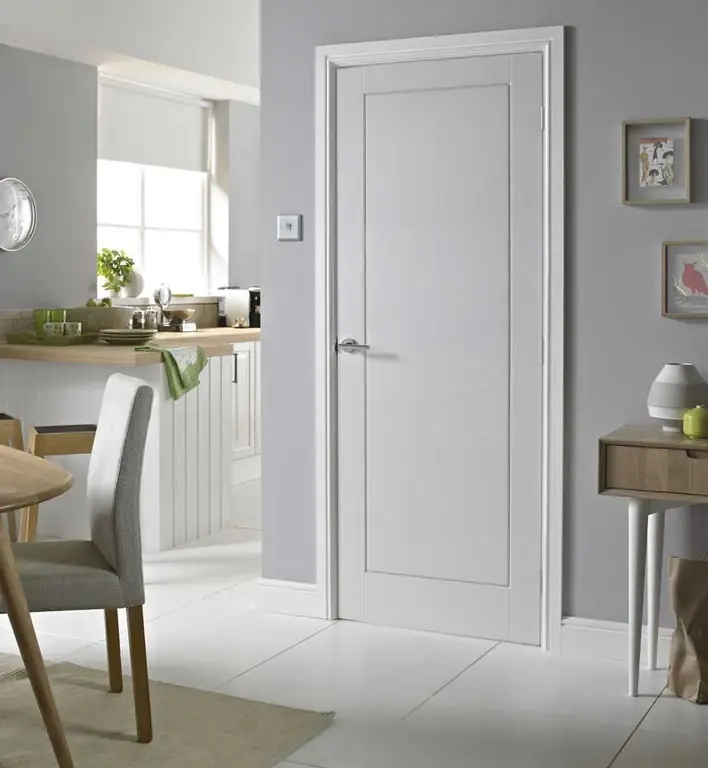
Options for interior doors in white, their advantages and disadvantages. How to choose and correctly complement the interior with white doors. Operating tips
The Interior Of The Kitchen And Living Room In A Loft Style In An Apartment And A Country House: Examples Of Design Design, Choice Of Color And Material, Decoration, Photo

The main features of the loft style and how to decorate the kitchen in such a design. The choice of materials, colors and textures for finishing. Loft-style lighting and decor for the kitchen
How To Remove Fleas From Cats And Cats At Home: How To Get Rid Of Them From Kittens And Adult Animals By Folk And Other Means, Photo
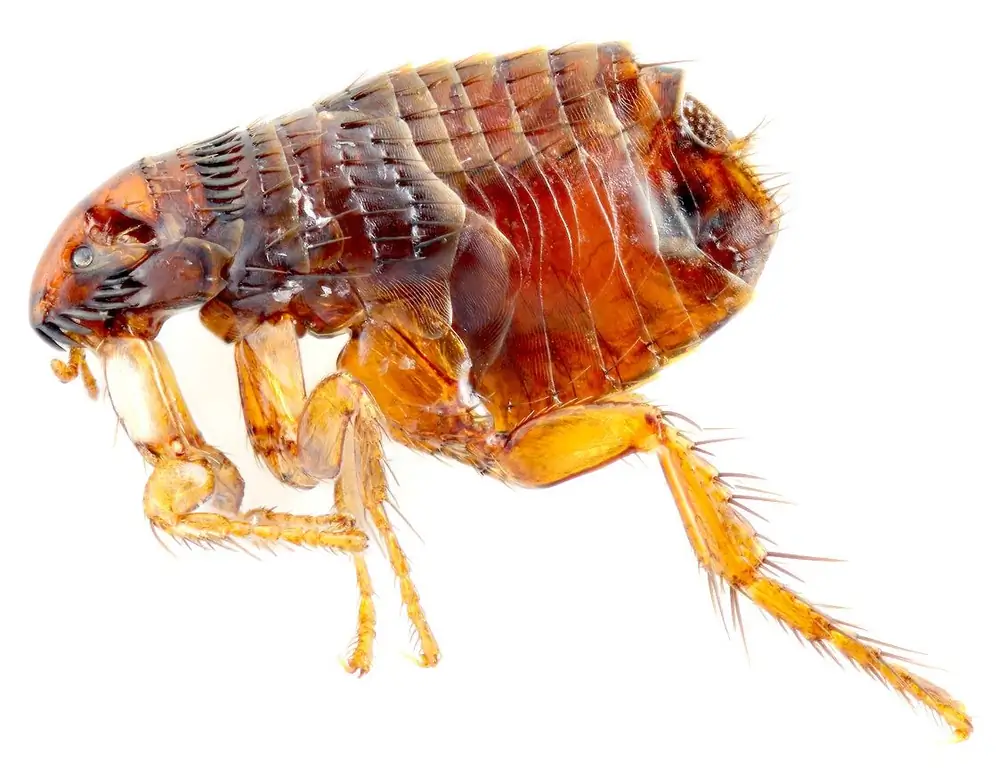
Flea life cycle. What is their danger to a cat? How to destroy fleas: drugs, folk remedies. How to prevent your pet from getting infected
The Third Eyelid In Cats: What It Is, Photo, Causes Of Inflammation (including When They Close Their Eyes), Treatment And Prevention
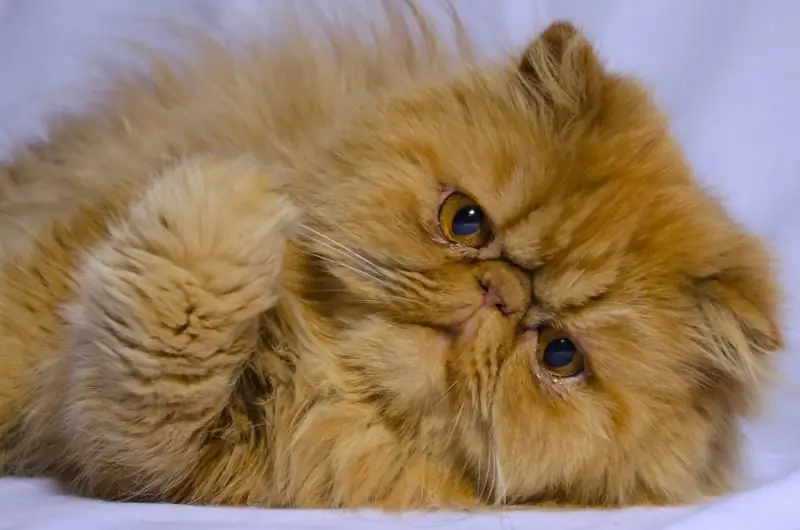
How does the blinking membrane of a cat work? Under what conditions its appearance changes. What can be the consequences. When a doctor is urgently needed. Prevention
